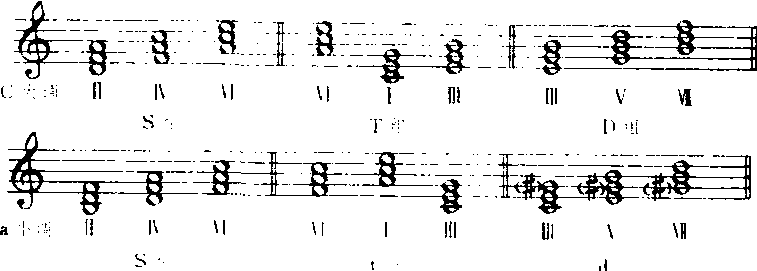副三和弦Fusan hexian
在大小调式各音级上建立的三和弦中,Ⅱ、Ⅲ、Ⅵ、Ⅶ级三和弦称为副三和弦,它们分别隶属于主、属、下属三个功能组,在配置和弦伴奏时,由于音色不同于正三和弦,可以起到调剂、对比的作用。另外在和弦力度上,也比正三和弦弱,也可以在和弦力度上和正三和弦形成对比、变化。

副三和弦按照与正三和弦共同音的多少,分别隶属于三个功能组,即主功能组,属功能组和下属功能组:

其中Ⅲ(⫼)和Ⅵ(Ⅵ)级和弦都隶属于主、属或主、下属两个功能,但Ⅳ级首先属于主功能(T)组,其次属于下属功能(S)组;而Ⅲ级首先属于属功能组,其次属于主功能组。而在小调中,⫼级在和声小调中升高五音即sol,形成增三和弦,而增三和弦由于极不稳定,也不协和,因此它不能作为主功能,所以在小调中的⫼级只有属功能性质而没有主功能性质。